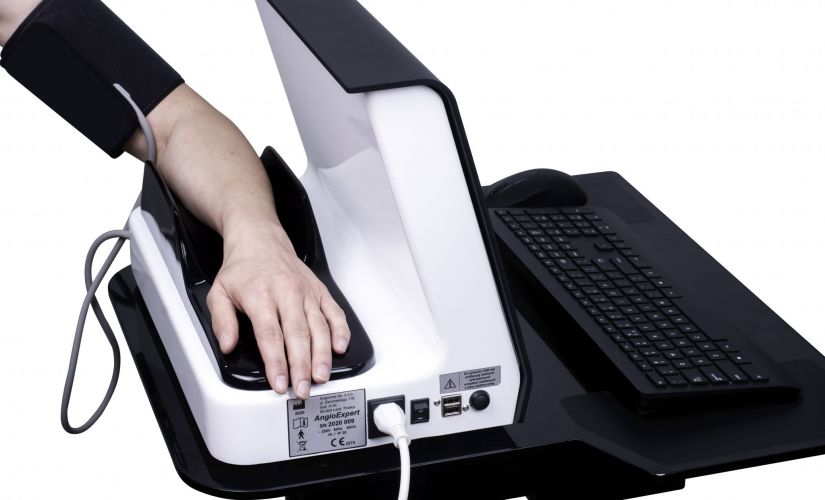The device is based on the use of an innovative method developed by researchers from Lodz University of Technology and the Jagiellonian University. The authors of Flow Mediated Skin Fluorescence (FMSF) are professors Jerzy Gębicki and Andrzej Marcinek from the Faculty of Chemistry of TUL and Prof. med. Stefan Chłopicki from the Collegium Medicum of the Jagiellonian University.
The method is based on measuring changes in the NADH fluorescence intensity in the skin of the forearm in response to the forced stoppage and release of blood flow. As these changes depend on the supply of oxygen to the epidermis with the participation of cutaneous microcirculation, therefore the use of the FMSF technique is a unique tool for monitoring the state of microcirculation. This innovative method, which has the potential to be used worldwide as a standard for assessing the condition of blood vessels, has been patented in Poland, but also in the EU, USA, Canada, China, Japan, Australia and Russia.
The most important applications of the FMSF method include:
- assessment of microcirculation disorders in diabetes, cardiovascular diseases and arterial hypertension,
- assessment of the severity of the disease (with possible referral for further diagnosis),
- monitoring the treatment of difficult-to-heal wounds (including diabetic foot),
- assessment of physical effort tolerance in amateur and competitive sports,
- monitoring of vascular circulatory disorders and the effectiveness of individualized therapy.
The first prototype of the device using FMSF was created at the Interdepartmental Institute of Radiation Technology of Lodz University of Technology. With commercialization in mind, the company Angionica Sp. z o. o. was set up, and four years later the AngioExpert device was registered as a medical device in class IIa. Angionica collaborates with research centres all over Poland, as well as with the Dutch clinical research centre in Leiden.
The AngioExpert device measures two parameters which, according to the authors of the FMSF method, should become the standard of diagnostic tests. The FMSF-PORH diagnostic test allows for the assessment of vascular complications risk related to cardiovascular diseases, also in diabetes, while the analysis of microcirculation oscillations allows for the quantitative and qualitative assessment of microvascular flow, which is impaired in many diseases. Assessment of this flow can be used to study the early symptoms of hypoxic conditions such as COVID-19, as well as in sports physiology.
Tests using the AngioExpert device are not yet widely available, but in Łódź they are conducted in two medical centres, in the Policlinic Medical Centre of Lodz University of Technology Foundation and in the Medical Centre of the Holy Family Hospital.

